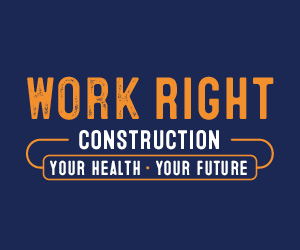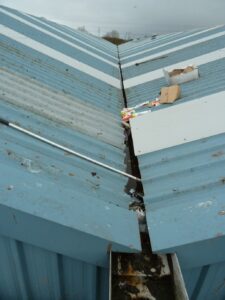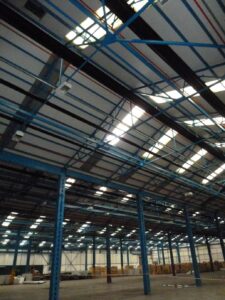- Around 42,000 construction workers suffer musculoskeletal disorder (MSDs) which can cause years of agonising aches and pains
- Serious aches, pains and strains can affect every part of someone’s life
- Construction site inspections focused on moving and handling in materials throughout September and October
 Moving and handling heavy or bulky objects on construction sites is needlessly harming the health of tens of thousands of workers every year.
Moving and handling heavy or bulky objects on construction sites is needlessly harming the health of tens of thousands of workers every year.
Working in construction is a physically demanding job and many construction workers’ health is suffering due to pain in muscles, bones, joints and nerves that affect every aspect of their lives and in many cases their ability to work and earn a living.
The Health and Safety Executive (HSE) is warning construction workers that the long-term impact on their health can leave them struggling to stand, walk, or sit down.
From 4 September 2023, HSE inspectors will be carrying out inspections of construction sites, focusing on the health risks of moving and handling materials on site.
Supporting the inspections initiative is HSE’s communications campaign ‘Work Right Construction. Your health. Your future’ (LINK), to raise awareness of the risks when moving and handling materials on site and provide advice for employers and workers.
Inspections in 2022 found widespread methods that can protect workers such as the use of mechanical equipment to handle large glazing panes, using small inexpensive air bags to help to position heavy doors when being installed, and the use of all-terrain pallet trucks to move blocks and brick-lifters to carry bricks around site.
However, inspectors also found many examples of poor practice, some of which resulted in enforcement action, such as a worker lifting an 80kg kerb on his own without any assistance from machinery, lifting aids or colleagues, and a 110kg floor saw that had to be moved into and out of a work van by two operatives at a street works site.
The law requires employers to control the risks of ill health of their workers, which includes pain in muscles, bones, joints and nerves that can develop over time, known as musculoskeletal disorders (MSDs). However, in the most recent period an estimated 42,000 people in the construction industry suffered from a work-related musculoskeletal disorder, which can cause years of agonising aches and pains. This amounts to 53% of all ill health in the construction sector.
If moving and lifting is managed properly, a physical job on a building site should not disrupt every part of workers’ lives.
Before work starts, moving and handling risks should be considered and prevented where possible at the design stage. Once on site, employers should talk to workers about controlling existing risks and make sure appropriate measures are in place, such as the right training, aids and equipment.
Matt Birtles, principal ergonomist at HSE, said: “It is important that the issue of manual handling is not downplayed. Serious aches, pains and strains should not be accepted as routine when working in construction. These can dramatically affect every part of someone’s life – with sufferers struggling to get themselves dressed and undressed, and unable to pick up their children or grandchildren.
“The culture of a site may mean many people feel uncomfortable talking about these issues but if your back has gone or if you’re in agony whenever you move your arms, measures need to be put in place to address the causes.”
HSE’s Acting Head of Construction Division Mike Thomas said:
“MSDs affect the lives of tens of thousands of construction workers and can lead to a lifetime of suffering. However, there are simple measures that can be taken to prevent this.
“Everyone involved in construction has a role to play in keeping people safe and healthy. We want everyone in the industry, from designers to contractors and their workers, to be aware of the risks associated with any moving or lifting task and put appropriate measures in place.
“The health of workers must be considered when planning construction work so that they can carry out their jobs without fear of injuring themselves or developing aches, pains and strains, including being provided with the correct equipment to lift and move materials safely.”
Notes to editors
- The Health and Safety Executive (HSE) is Britain’s national regulator for workplace health and safety. We prevent work-related death, injury and ill health through regulatory actions that range from influencing behaviours across whole industry sectors through to targeted interventions on individual businesses. These activities are supported by globally recognised scientific expertise. https://www.hse.gov.uk/
- HSE has a tool which can be used by employers to assess the risks to their workers of ill health. It can be found at: Manual handling assessment charts (the MAC tool) (hse.gov.uk)
- More information about the HSE campaign, Your Health. Your Future can be found at: WorkRight Construction: Your health. Your future – Work Right to keep Britain safe
- Statistics on the incidence of MSDs are published in the annual Labour Force Survey – LFS – Labour Force Survey – Self-reported work-related ill health and workplace injuries: Index of LFS tables (hse.gov.uk)
Support for the HSE campaign, Your Health. Your Future: Geraldine Brammer, HCLG MSD lead and Occupational Health Leader, Europe, Laing O’Rourke
“Health in Construction Leadership Group (HCLG) is supportive of HSE’s campaign as we know MDS’s can have a huge impact on our construction colleagues and their ability to undertake their roles safely. MSD’s also impact on our colleagues quality of life beyond the construction site, both from a physical and psychological perspective.
“Working collaboratively is imperative in supporting the understanding of MSD’s. Within the HCLG MSD sub-group, we are working towards producing campaign videos for the construction industry to raise further awareness and drive meaningful action to shift the acceptable level of risk around MSD’s in the industry. A united industry approach is an exciting opportunity ahead of us, showing joined up leadership which is meaningful and ultimately changes behaviours.”
 Moving and handling heavy or bulky objects on construction sites is needlessly harming the health of tens of thousands of workers every year.
Moving and handling heavy or bulky objects on construction sites is needlessly harming the health of tens of thousands of workers every year.
